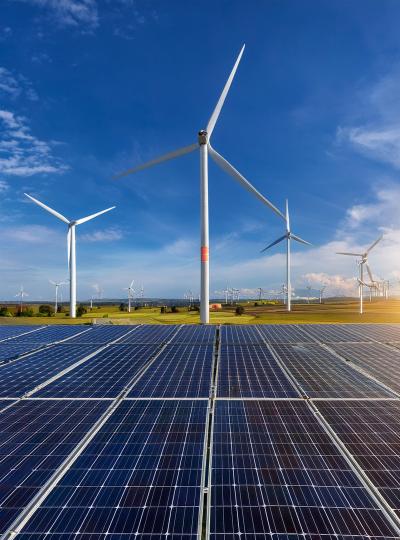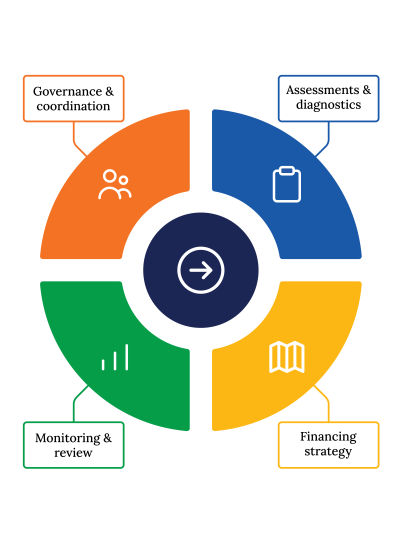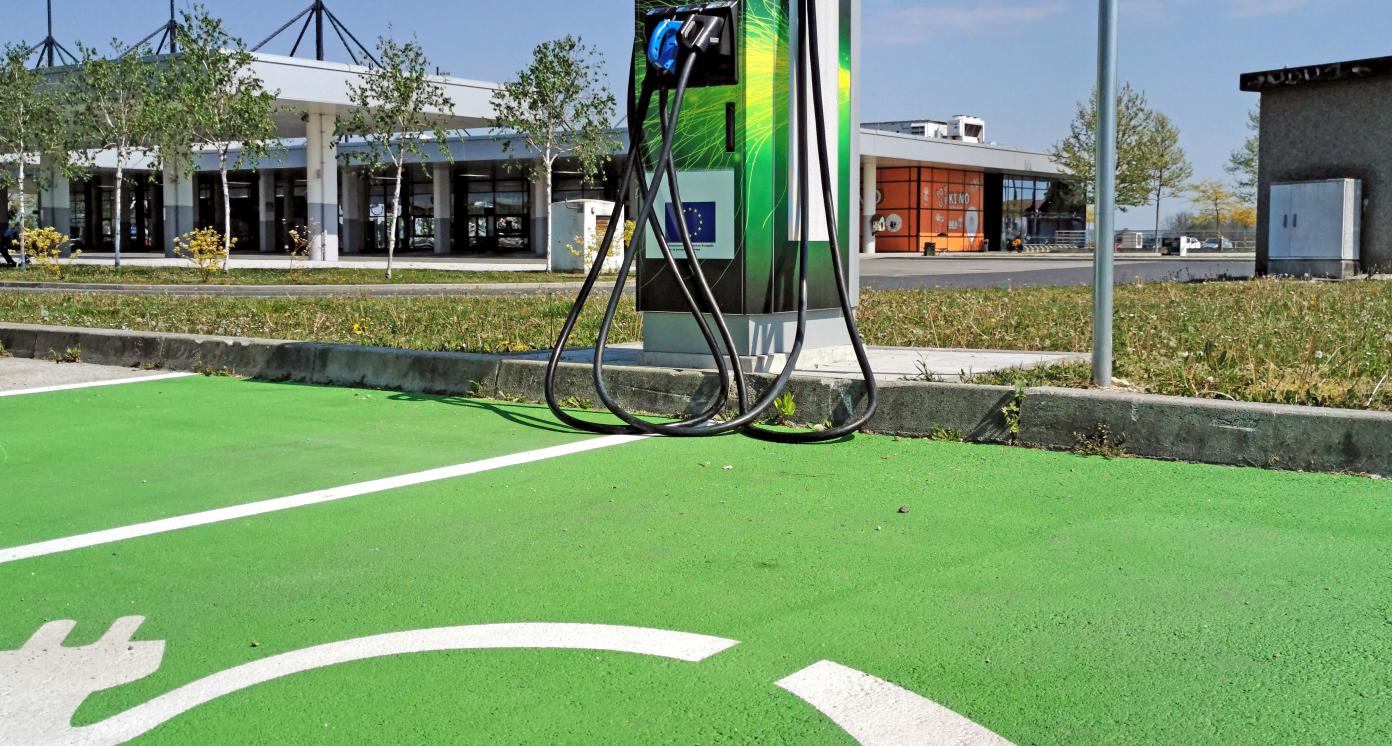Electric Vehicle (EV) Charging Stations
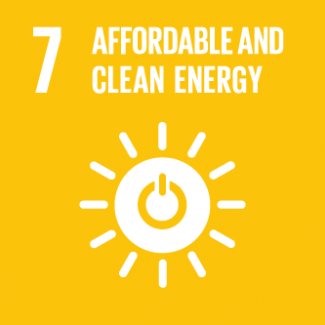


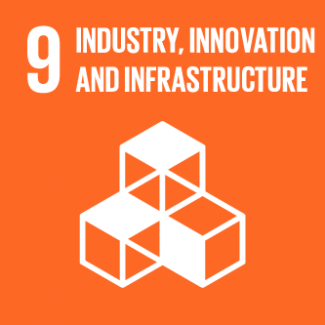
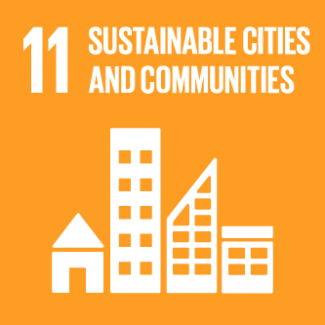
Business Model Description
Develop, install, and operate a network of EV charging stations (preferably solar-powered) across North Macedonia, ensuring accessibility on highways and urban centers. Offer charging services via a subscription model, pay-per-use options, and partnerships with municipalities and businesses to promote electro-mobility.
Expected Impact
Expanding EV charging infrastructure to accelerate clean mobility, improve air quality, and enhance equitable access to sustainable transport.
How is this information gathered?
Investment opportunities with potential to contribute to sustainable development are based on country-level SDG Investor Maps.
Disclaimer
UNDP, the Private Finance for the SDGs, and their affiliates (collectively “UNDP”) do not seek or solicit investment for programmes, projects, or opportunities described on this site (collectively “Programmes”) or any other Programmes, and nothing on this page should constitute a solicitation for investment. The actors listed on this site are not partners of UNDP, and their inclusion should not be construed as an endorsement or recommendation by UNDP for any relationship or investment.
The descriptions on this page are provided for informational purposes only. Only companies and enterprises that appear under the case study tab have been validated and vetted through UNDP programmes such as the Growth Stage Impact Ventures (GSIV), Business Call to Action (BCtA), or through other UN agencies. Even then, under no circumstances should their appearance on this website be construed as an endorsement for any relationship or investment. UNDP assumes no liability for investment losses directly or indirectly resulting from recommendations made, implied, or inferred by its research. Likewise, UNDP assumes no claim to investment gains directly or indirectly resulting from trading profits, investment management, or advisory fees obtained by following investment recommendations made, implied, or inferred by its research.
Investment involves risk, and all investments should be made with the supervision of a professional investment manager or advisor. The materials on the website are not an offer to sell or a solicitation of an offer to buy any investment, security, or commodity, nor shall any security be offered or sold to any person, in any jurisdiction in which such offer would be unlawful under the securities laws of such jurisdiction.
Country & Regions
- Republic of North Macedonia: Skopje
- Republic of North Macedonia: Southeastern
- Republic of North Macedonia: Vardar
Sector Classification
Renewable Resources and Alternative Energy
Development need
The Republic of North Macedonia relies heavily on imported fossil fuels. This increases its energy vulnerability and carbon footprint. The need for decentralized renewable energy solutions, particularly solar, is critical to ensuring energy security, reducing long-term costs, and supporting the transition to a low-carbon economy. (1)
Policy priority
Multiple national strategy policies prioritize renewable energy expansion, aligning with EU directives on green transformation. Policies promote investment in solar energy through tax incentives, streamlined permitting for photovoltaic systems, and integration into the national grid. PPPs and international funding sources, including EU Green Deal initiatives, can support the sector’s growth. (1-8)
Gender inequalities and marginalization issues
Women and marginalized communities have lower participation in energy sector employment and decision-making. Expanding decentralized solar energy systems can empower women through job creation, skill development, and entrepreneurship in energy solutions. Additionally, rural electrification can improve access to education, healthcare, and digital services for underrepresented communities. (19)
Investment opportunities introduction
Renewable energy sector offers diverse investment opportunities beyond solar and wind farms. Major international and regional investments demonstrate growing investor confidence. Government support, feed-in tariffs, and green financing tools enhance the sector’s overall attractiveness. (1)
Key bottlenecks introduction
Regulatory uncertainties, slow permitting processes, and limited access to financing for small-scale energy producers hamper sector expansion. Grid infrastructure requires upgrades to accommodate decentralized energy generation.A lack of local expertise in battery storage and smart energy management technologies calls for targeted capacity-building programs. (20)
Alternative Energy
Development need
The country has high but underutilized solar power generation capacity. The transition to electro-mobility in North Macedonia requires a well-developed EV charging infrastructure to support the increasing adoption of electric vehicles, reduce air pollution, and enhance energy efficiency. (6, 9)
The NDS and National Energy and Climate Plan, envisage expanded use of electric vehicles and plug-in hybrid vehicles. Aligning with EU directives and national sustainability goals, expanding EV charging infrastructure and incentivizing electric vehicle adoption are critical for reducing greenhouse gas emissions and fostering energy independence. (1, 7)
Gender inequalities and marginalization issues
Limited access to affordable EVs and charging infrastructure may disproportionately impact lower-income populations, particularly women and marginalized communities, who face economic barriers to adopting sustainable transport solutions. (21)
Investment opportunities introduction
There is significant potential for investment in solar-powered EV charging stations, fast-charging networks along major highways, and smart grid integration, with increasing demand driven by policy incentives and environmental concerns. (21)
Key bottlenecks introduction
Challenges remain regarding insufficient fast-charging infrastructure, lack of government subsidies for EVs, slow policy implementation, and range anxiety among consumers due to the limited availability of charging stations across the country. (20, 21)
Solar Technology and Project Developers
Pipeline Opportunity
Electric Vehicle (EV) Charging Stations
Develop, install, and operate a network of EV charging stations (preferably solar-powered) across North Macedonia, ensuring accessibility on highways and urban centers. Offer charging services via a subscription model, pay-per-use options, and partnerships with municipalities and businesses to promote electro-mobility.
Business Case
Market Size and Environment
6,550 EV in circulation (1.2% of 552,934 total passenger cars in 2023). (29)
As of February 2025, only 1,055 EVs are registered and 5,500 hybrid vehicles, of which unknown portion are plug-in vehicles. (14)
Annual traffic growth is projected at 3.34% per annum during 2023-2030 and 2.67% per annum during 2031-2050. Projected EV penetration is 8% by 2030, 25% by 2040, 50% by 2050 under the "Do Something" scenario.(15)
The existing grid could handle up to a 40 per cent electric fleet by 2040 with no additional grid investment. (11)
By 2040 the share of electric and plug-in hybrid electric vehicles in total passenger car kilometres will be: - 10% in the Reference; - 40% in the Moderate Transition and - 45% in the Green Scenario. (6)
Indicative Return
5% - 10%
Financial viability of low-power (AC) charging stations in neighbouring Greece suggests an IRR of around 10%. (22)
In Bulgaria, a study reported IRR on the order of 13%-14% (an 8-year payback on a 20-year project), assuming the station operates for 20 years. (23)
A study estimates an IRR of 6% for EV charging stations in Germany. (37)
Investment Timeframe
Medium Term (5–10 years)
Investors might anticipate a payback period of approximately 5 to 8 years. (15, 23)
Ticket Size
< USD 500,000
Market Risks & Scale Obstacles
Capital - CapEx Intensive
Capital - Requires Subsidy
Market - Highly Regulated
Impact Case
Sustainable Development Need
By expanding EV charging infrastructure, the business model reduces reliance on fossil fuels, lowering CO₂ emissions and urban air pollution, improving public health, and contributing to climate change mitigation. (30)
By increasing EV charger availability across urban and rural areas, the business model facilitates e-mobility adoption, making sustainable transport more accessible, reducing noise pollution, and supporting green urban development (30, 31)
Gender & Marginalisation
Expanding EV charging infrastructure improves women's access to sustainable transportation, particularly in regions where limited public transit and high vehicle costs disproportionately affect female mobility. (32)
By supporting subsidies and incentives for EV adoption, the model reduces financial barriers for marginalized groups, ensuring low-income communities can benefit from cost-effective, sustainable transport options (30, 31)
The expansion of EV infrastructure creates green jobs in installation, maintenance, and energy management, promoting women's participation in STEM fields and offering economic inclusion for underrepresented groups. (33)
Expected Development Outcome
The business model reduces CO₂ emissions and urban air pollution by enabling greater EV adoption, improving public health, and supporting North Macedonia’s climate commitments under EU sustainability goals.
By expanding charging infrastructure, the model removes barriers to EV ownership, encouraging a shift toward clean transportation, reducing noise pollution, and enhancing urban mobility.
Investments in EV charging create employment in renewable energy, tech, and infrastructure, fostering economic inclusion and gender-diverse opportunities in the transition to a low-carbon economy.
Gender & Marginalisation
Strong EV charging infrastructure enhances transport access for women and low-income communities, reducing reliance on costly or unsafe transit options, and promoting equitable mobility solutions.
The growth of the EV charging sector creates green jobs in STEM, energy, and infrastructure, fostering greater female participation and inclusive employment opportunities for marginalized groups.
By supporting EV incentives and subsidies, the model makes electric mobility more financially viable, ensuring lower-income individuals benefit from cost savings and a cleaner transport system.
Primary SDGs addressed

7.2.1 Renewable energy share in the total final energy consumption
The contribution of electric vehicles currently is close to zero. In the total energy consumption in transport, only biofuels contributed to renewable energy share of 9% in the final energy consumption in the transport sector in 2022. (8)
Electric vehicles can and should contribute to an increase of renewable energy share (RES) in transport by 8 percentage points, reaching 17% RES share in transport in 2030. (8)

13.2.2 Total greenhouse gas emissions per year
11.37 Mton CO2eq in 2023. (21)
By 2030, the NECP envisages 82% reduction in GHG net emissions compared to 1990 levels, 66% reduction in emissions in the energy sector; 45% reduction in emissions in the industrial processes and product use sector; 29% reduction in emissions in the agriculture sector; 95% reduction in emissions by increasing the forest fund; 21% reduction in emissions in the waste sector. (8)
Secondary SDGs addressed



Directly impacted stakeholders
People
Gender inequality and/or marginalization
Planet
Corporates
Public sector
Indirectly impacted stakeholders
People
Gender inequality and/or marginalization
Planet
Corporates
Public sector
Outcome Risks
A sudden surge in EV charging could strain the electricity grid, leading to higher energy costs and potential power shortages, especially in areas with weak grid infrastructure.
Expanding EV charging networks requires land use, resource extraction, and construction, potentially disrupting ecosystems and generating waste from battery and charger disposal.
Reliance on capital goods for EV charging stations could increase economic dependence, slowing local industry development and limiting job creation in domestic manufacturing.
Women and marginalized groups may be underrepresented in EV industry jobs, limiting economic opportunities in the clean energy and transportation sectors.
Impact Risks
If EV adoption remains low, charging stations may be underutilized, delaying profitability and reducing environmental benefits from lower emissions and improved air quality.
Delays in government incentives, subsidies, or regulatory approvals could hinder infrastructure expansion, discouraging investment and slowing market growth.
Rising electricity prices or inefficient pricing models could make charging unaffordable, limiting EV uptake and failing to deliver sustainable transport benefits.
Insufficient grid upgrades and technical constraints could lead to charging congestion, power disruptions, or slow rollout, affecting reliability and user trust.
Gender inequality and/or marginalization risk: Women, low-income communities, and rural populations may face reduced mobility access, widening social and economic disparities.
Impact Classification
What
The expansion of EV charging infrastructure enables cleaner transportation, reduces CO₂ emissions, and improves air quality. Positive impact but dependent on EV adoption growth and energy costs.
Who
EV owners, urban and rural commuters, low-income communities, and businesses benefit. Rural and marginalized groups remain underserved due to limited charger distribution and affordability.
Risk
Slow EV adoption, high electricity costs, policy delays, and grid limitations could hinder expected environmental and social benefits.
Contribution
Without this initiative, EV infrastructure growth in North Macedonia would be slower, with fewer incentives for adoption, delaying air quality improvements and energy transition efforts.
How Much
With 1,055 EVs in 2024 and projections of 8% EV penetration by 2030, the impact is scalable but dependent on policy support. (6, 8, 13)
Impact Thesis
Expanding EV charging infrastructure to accelerate clean mobility, improve air quality, and enhance equitable access to sustainable transport.
Enabling Environment
Policy Environment
The National Development Strategy 2024-2044 positions green infrastructure and digital transformation as key enablers of sustainable growth, which makes EV charging stations an investment aligned with the priorities of “Green Transformation and Sustainable, Innovative and Competitive Economy". (1)
Strategy for Development of the Energy Sector (until 2040) emphasizes the need for electrification of transport and integration of renewable energy, making EV charging stations a key investment opportunity to support energy transition and to reduce dependence on fossil fuels. (6)
National Energy and Climate Plan envisages increase of renewable energy capacities. (8)
Smart Specialization Strategy encourages the development of energy self-sustainable buildings, widespread utilization of renewable energy, and the introduction of innovative energy-efficient technologies. (2)
National Transport Strategy 2018-2030 prioritizes sustainable and low-emission mobility, promotes expansion of EV charging infrastructure as an investment opportunity aligned with the country’s long-term goals for environmental protection and EU integration. (8)
Financial Environment
Financial incentives: The European Investment Bank (EIB) and EBRD provide grants and low-interest loans for EV charging infrastructure, supporting private and public investments in sustainable transport projects. (10)
Fiscal incentives: Fully electric vehicles (EVs) and electric motorcycles, scooters, tricycles, and quadricycles are exempt from the tax on motor vehicles. However, plug-in hybrid electric vehicles (PHEVs) are subject to taxation, but may receive a 50% tax reduction. (12)
Regulatory Environment
Law on Energy provides a general legal framework that supports EV charging stations through provisions on energy infrastructure, renewable energy, and efficiency, but lacks specific regulations directly governing EV charging infrastructure. (26)
Law on Construction regulates the procedures and requirements for obtaining permits and building infrastructure, including EV charging stations, ensuring compliance with technical and urban planning standards. (26)
Law on Construction Land governs the use, lease, and sale of state-owned land, which is essential for locating and developing EV charging stations, particularly in public or commercially strategic areas. (26)
Law on Tax on Motor Vehicles incentivizes the use of electric vehicles—exempting or significantly reducing taxes on low- or zero-emission cars—which indirectly supports the demand for EV charging stations in North Macedonia. (11)
EU Directive 2019/944 on Electricity Market Rules mandates frameworks to facilitate the integration of electric vehicle (EV) recharging points into distribution networks. (18)
Marketplace Participants
Private Sector
EVN eMobility, renewable energy startups.
Government
Ministry of Economy (North Macedonia), Energy Regulatory Commission, Ministry of Transport and Communications.
Multilaterals
European Bank for Reconstruction and Development (EBRD), European Investment Bank (EIB), World Bank, UNDP.
Non-Profit
Association for Promotion of Electirc Vehicles Ëlectromobility Skopje, Eko-svest.
Public-Private Partnership
Free parking for electric vehicles is provided by the municipalities of Strumica, Bitola, and Ohrid, indicating municipal support for EV adoption. (28)
Target Locations
Republic of North Macedonia: Skopje
Republic of North Macedonia: Southeastern
Republic of North Macedonia: Vardar
References
- (1) National Development Strategy of the Republic of North Macedonia 2024-2044
- (2) Smart Specialization Strategy
- (3) Communication and roadmap on the European Green Deal (European Commission) https://commission.europa.eu/strategy-and-policy/priorities-2019-2024/european-green-deal_en "4) Green Agenda for Western Balkans (COMMISSION STAFF WORKING DOCUMENT Guidelines for the Implementation of the Green Agenda for the Western Balkans, Brussels, 6.10.2020 SWD(2020) 223 final)"
- (5) Just Transition Roadmap for North Macedonia, Ma 2023 (https://economy.gov.mk/content/documents/Web%20strana%20zabeleshki%20od%20Agencija%20za%20primena%20na%20jazikot%20na%20RSM%2007.07.2021.pdf)
- (6) Strategy for the Development of the Energy Sector until 2040 (Government of North Macedonia) https://vicepremier-ekonomija.gov.mk/sites/default/files/dokumenti/EnergyDevelopmentStrategy_FINAL_Submitted_toGovMK_08.01.2020_clean_za_sluzben_vesnik_za_na_web.pdf
- (7) National Energy and Climate Plan (NECP) 2022, https://www.economy.gov.mk/content/Official%20NECP_EN.pdf
- (8) National Transport Strategy 2018-2030, https://www.mtc.gov.mk/media/files/2019/NTS-final%20MK.pdf
- (9) Electromobility with EVN, https://emobility.evn.mk/with-us/Electromobility-with-EVN.aspx?lang=en
- (10) The EBRD in North Macedonia - Sustainable Infrastructure and Regional Integration, https://www.ebrd.com/sustainable-infrastructure-North-Macedonia.pdf
- (11) Law on Tax on Motor Vehicles (Official Gazette no. 261 from 18.12.2019)
- (12) EU Directive 2014/45/ on Periodic Roadworthiness Tests for Motor Vehicles and their Trailers
- (13) Database of the Ministry of Internal Affairs, Assessed on March 12th, 2025. Interview with Toni Filipovski, Ministry of Internal Affairs.
- (14) Strategic Framework for Deployment of E-Charging Stations on Ten-T network, Transport Community, Vienna, 20 December 2023 "15) Law on Construction (Official Gazette no. 130/2009, 124/10, 18/11, 36/11, 54/11, 13/12, 144/12, 25/13, 79/13, 137/13, 163/13, 27/14, 28/14, 42/14, 115/14, 149/14, 187/14, 44/15, 129/15, 217/15, 226/15, 30/16, 31/16, 39/16, 71/16, 132/16, 35/18, 64/18 и 168/18, 244/19, 18/20, 279/20 and 227/22)"
- (16) Law on Construction Land (Official Gazette of the Republic of Macedonia, No.15/2015 and its subsequent amendments)
- (17) Reform agenda for Western Balkans, Reform and Growth Facility for North Macedonia ( https://mep.gov.mk/data/MK_Reform%20Agenda_EN.pdf)
- (18) Directive (EU) 2019/944 of the European Parliament and of the Council of 5 June 2019 on common rules for the internal market for electricity and amending Directive 2012/27/EU (recast) https://eur-lex.europa.eu/eli/dir/2019/944/oj/eng
- (19) Orlando, M. B., Janik, V. L., Vaidya, P., Angelou, N., Zumbyte, I., & Adams, N. (2018). Getting to gender equality in energy infrastructure: Lessons from electricity generation, transmission, and distribution projects. Energy Sector Management Assistance Program (ESMAP) Technical Report 012/18. World Bank.
- (20) Boromisa, A.-M. (2025, February 19). Energy challenges in the Western Balkans. per Concordiam. https://perconcordiam.com/energy-challenges-in-the-western-balkans/
- (21) IRENA & UNDP. (2021). De-risking renewable energy investment: North Macedonia country profile. International Renewable Energy Agency. https://www.irena.org/-/media/Files/IRENA/Agency/Publication/2021/Oct/IRENA_UNDP_De-risk_Investments_North-Macedonia_2021.pdf
- (22) Statharas, S.; Moysoglou, Y.; Siskos, P.; Capros, P. Simulating the Evolution of Business Models for Electricity Recharging Infrastructure Development by 2030: A Case Study for Greece. Energies 2021, 14, 2345. https://doi.org/10.3390/en14092345 "23) liya Mihaylova Ilieva, Simeon Penchev Iliev (2016) Feasibility assessment of a solar-powered charging station for electric vehicles in the North Central region of Bulgaria, Renew. Energy Environ. Sustain. 1 12 (2016) DOI: 10.1051/rees/2016014"
- (24) Jovanović, S. (2018, October 12). EVN Macedonia developing nationwide EV charging network. Balkan Green Energy News. https://balkangreenenergynews.com/evn-macedonia-developing-nation-wide-ev-charging-network/
- (25) Fanciya. (2024, October 11). Exploring the growth of EV charging in Kosovo. GREENC. https://greenc-ev.com/exploring-the-growth-of-ev-charging-in-kosovo/
- (26) E-Mobility Albania, https://e-mobility.al/about-us/
- (27) SeeNews. (2024, October 7). Serbia plans to have 164 EV chargers on motorways by April. https://seenews.com/news/serbia-plans-to-have-164-ev-chargers-on-motorways-by-april-1263426
- (28) Sejdini, X. (2024). Evolution of electric vehicle registrations and charging infrastructure in North Macedonia. Journal of Material Sciences & Applied Engineering, 3(4), 1–4. https://mkscienceset.com/articles_file/387-_article1727076416.pdf
- (29) State Statstical Office, North Macedonia, Number of registered passenger cars, https://makstat.stat.gov.mk/PXWeb/pxweb/mk/MakStat/MakStat__Transport__RegistriraniVozila/150_Trans_regi_veh_by_type_mun_ml.px/table/tableViewLayout2/ "30) IEA (International Energy Agency) (2021) Global EV Outlook 2021: Accelerating ambitions despite the pandemic. https://www.iea.org/reports/global-ev-outlook-2021"
- (31) Slowik, P., & Wappelhorst, S. (2021). Expanding electric vehicle adoption: Equity considerations for electric vehicle incentives. International Council on Clean Transportation. https://theicct.org/wp-content/uploads/2021/06/EV-equity-feb2021.pdf
- (32) Csillak, K., & Kamenz, S. (2022). Electric Charging Infrastructure and Gender Equality: A literature-based overview for USER-CHI (H2020 project). IKEM. Retrieved from https://www.ikem.de/wp-content/uploads/2022/12/5_USER-CHI_SotF_GenderEquality_IKEM.pdf
- (33) UN Women and UNIDO. (2023). Gender Equality in the Sustainable Energy Transition. https://www.unwomen.org/sites/default/files/2023-05/Gender-equality-in-the-sustainable-energy-transition-en.pdf
- (34) Russo, S., Spiller, B., & Wilwerding, R. (2024). Equity in Electric Vehicle Charging Infrastructure. Resources for the Future. Retrieved from https://www.rff.org/documents/4589/WP_24-14.pdf
- (35) Electromaps (2025) Charging stations in North Macedonia. Retrieved April 10, 2025, from https://www.electromaps.com/en/charging-stations/north-macedonia
- (36) Program for Development of the South-Eastern Region 2021-2026
- (37) Hecht, C., Figgener, J., & Sauer, D. U. (2022). Analysis of electric vehicle charging station usage and profitability in Germany based on empirical data. iScience, 25(12), 105634. https://doi.org/10.1016/j.isci.2022.105634





